The director of the British Museum has resigned ‘with immediate effect’ and its deputy has stepped back following a disastrous week in which it emerged a curator had been sacked after almost 2,000 artefacts were reported to have been stolen.
Director Hartwig Fischer and deputy director Jonathan Williams both announced their decisions on Friday.
Both were criticised when whistleblower Dr Ittai Gradel revealed he had contacted them about alleged thefts in February 2021, after spotting items he had seen in the museum’s catalogue for sale online.
Curator Peter Higgs, who has been arrested by the Metropolitan Police over the allegations, has since been sacked by the museum.
Dr Fischer insisted that the museum had taken concerns ‘seriously’ two years ago and appeared to suggest Dr Gradel had not revealed enough information in his statement earlier this week – but has now admitted it did not react ‘as comprehensively as it should have’.
The British Museum’s director Dr Hartwig Fischer (pictured), who was contacted about the thefts in 2021, said: ‘We now have reason to believe that the individual who raised concerns had many more items in his possession, and it’s frustrating that that was not revealed to us…’
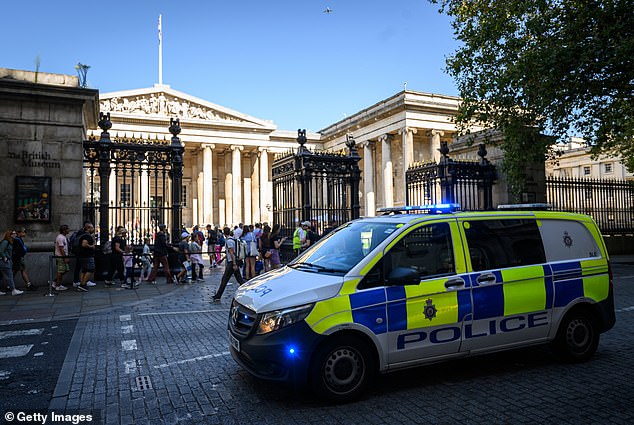
British Museum officials launched an investigation into missing artefacts, comprising of gold jewellery, semi-precious stones and glass valued at up to £50,000, were being sold on eBay for as little as £40
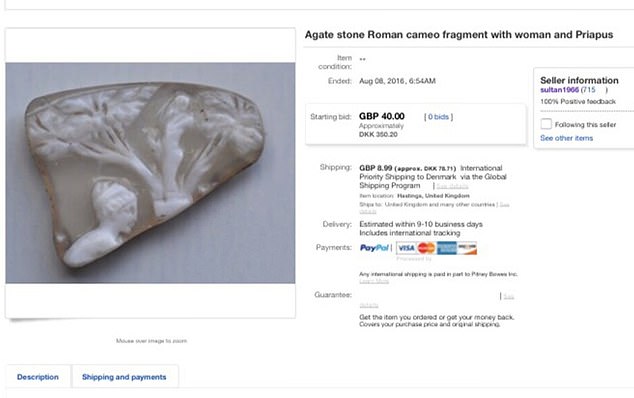
Dr Ittai Gradel’s screenshotted one item, showing the eBay’s seller’s name was sultan1966
In his announcement today, Dr Fischer said: ‘Over the last few days I have been reviewing in detail the events around the thefts from the British Museum and the investigation into them.
‘It is evident that the British Museum did not respond as comprehensively as it should have in response to the warnings in 2021, and to the problem that has now fully emerged.
‘The responsibility for that failure must ultimately rest with the Director. I also misjudged the remarks I made earlier this week about Dr Gradel. I wish to express my sincere regret and withdraw those remarks.
‘I have offered my resignation to the Chairman of the Trustees, and will step down as soon as the Board have established an interim leadership arrangement. This will remain in place until a new director is chosen.
‘The situation facing the Museum is of the utmost seriousness. I sincerely believe it will come through this moment and emerge stronger, but sadly I have come to the conclusion that my presence is proving a distraction.
‘That is the last thing I would want.’
The museum’s board of trustees accepted his resignation, with former chancellor George Osborne, chairman of trustees saying Fischer had ‘acted honourably’ and that ‘no one has ever doubted Hartwig’s integrity, his dedication to his job, or his love for the museum.’
Fischer added: ‘Over the last seven years I have been privileged to work with some of the most talented and dedicated public servants. The British Museum is an amazing institution, and it has been the honour of my life to lead it.’
Mr Osborne said the board was already seeking a successor. He said: ‘I am clear about this; we are going to fix what has gone wrong. The museum has a mission that lasts across generations. We will learn, restore confidence and deserve to be admired once again.’
Shortly afterwards, the British Museum told MailOnline: ‘British Museum Deputy Director Jonathan Williams has agreed to voluntarily step back from his normal duties until the independent review into the thefts at the Museum has concluded. This will happen with immediate effect.’
Emails leaked to BBC News suggest the museum was alerted by antiquities dealer Dr Gradel to items being sold on eBay in 2021 and ignored the report.
Director Hartwig Fischer insisted that the museum had taken these concerns ‘seriously’ two years ago and appeared to blame Dr Gradel in his statement earlier this week.

British Museum Deputy Director Jonathan Williams has ‘voluntarily’ stepped back from duties, the museum confirmed on Friday

Dr Ittai Gradel, a Danish art dealer, detected that precious items were being sold on eBay and contacted the British Museum’s directors in 2021, but says his concerns were not acted on
The German art historian, who the museum previously announced would step down from his role next year, had stated: ‘The investigation concluded that those items were all accounted for.
‘We now have reason to believe that the individual who raised concerns had many more items in his possession, and it’s frustrating that that was not revealed to us as it would have aided our investigations.’
He also said a full audit in 2022 had revealed a ‘bigger’ problem which led to police involvement.
Dr Ittai Gradel, an antiquities dealer, says he was rebuffed by both British museum director Dr Hartwig Fischer and deputy director Dr Jonathan Williams when he sent them evidence in February 2021.
Dr Gradel said: ‘The claim that I withheld information from the BM (British Museum) is an outright lie, and I can prove it.
‘I was explicit in my communication with the BM that I was entirely at their disposal for any further information or assistance they would require. They never contacted me.’
The museum has not specified how many items are missing or detailed what the missing items are, saying only that they are ‘small pieces’ dating from the ’15th century BC to the 19th century AD’.
The antiquities dealer said: ‘I’m willing to accept that Fischer is an idiot who lives in cloud cuckoo land and doesn’t understand anything and relies solely on the advice of his deputy director, Jonathan Williams.’
Higgs’ family insists he is innocent and he will clear his name. Last week, his son Greg said: ‘He’s not done anything. He’s not happy about it at all.
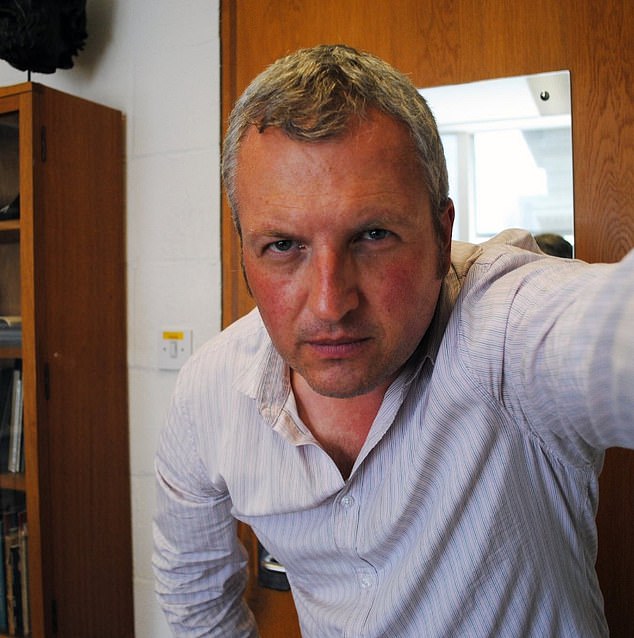
Dr Peter Higgs, a curator employed by the British Museum for over 30 years, was sacked, it was revealed last week

The British Museum continues to deal with the disastrous fallout after it emerged last week that as many as 2,000 precious items were unaccounted for

Museum curator Dr Peter Higgs in a 2018 Facebook post wearing an ancient mask
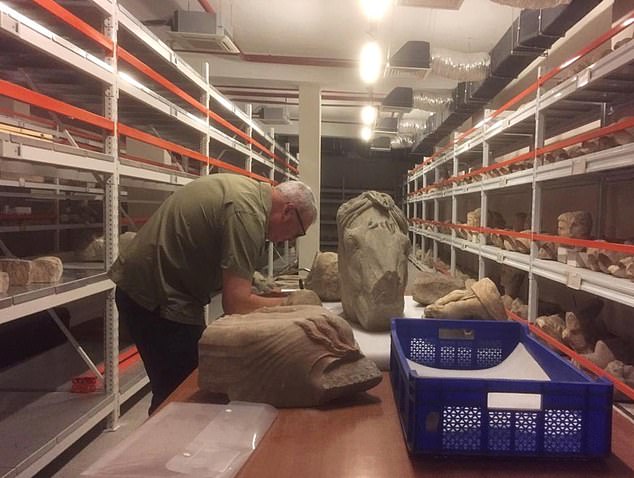
He had worked there for 35 years. His family insist he is innocent
It was previously reported that a man has been interviewed by the Metropolitan Police officers after missing items were reported at the British Museum.
The London institution revealed last week that the force is investigating items that are ‘missing, stolen or damaged’ from its collection.
In a statement police said: ‘A man has been interviewed by investigating officers. No arrests have been made.
‘We have worked closely with the British Museum and will continue to do so.
‘We will not be providing any further information at this time. Inquiries continue.’
It is understood that the items, which include gold jewellery, gems of semi-precious stones and glass, were taken before 2023 and over a ‘significant’ period of time.
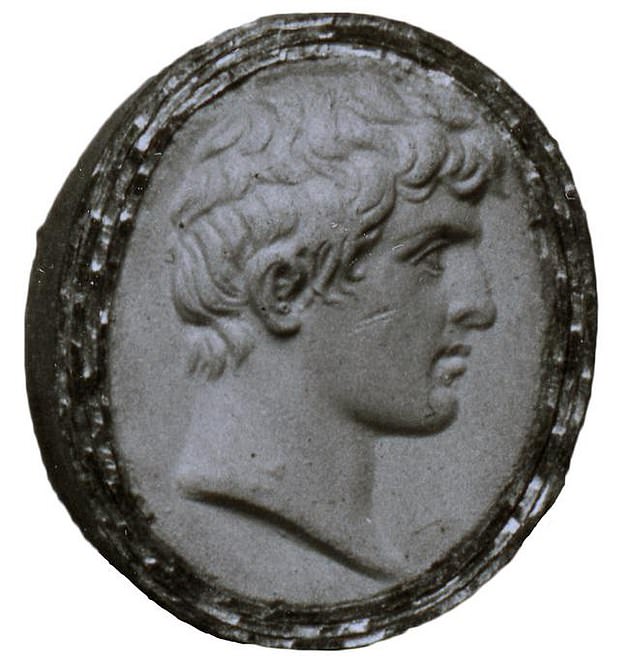
A plasma gem engraved with a portrait of a young Roman in profile is among the items missing from the British Museum
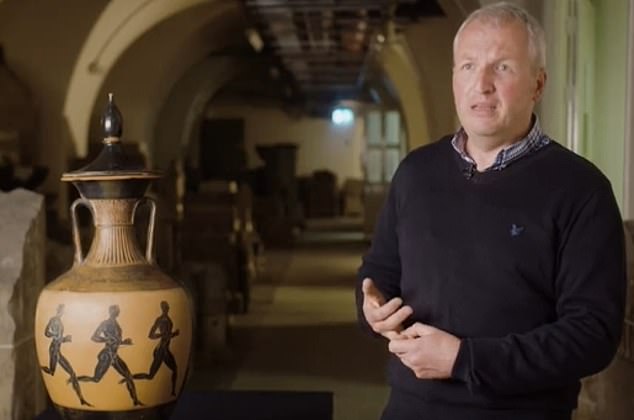
One of the gems believed to have vanished from the British Museum, pictured in its broken state
Dr Gradel said he purchased over 70 items from an eBay seller from 2014 onwards.
He said he became suspicious after seeing an item had featured on the British Museum’s website in 2020.
‘I sent the evidence to the deputy director. Then, when I heard nothing from him, I sent it to the director, who did not even bother to answer me. But then at least the deputy director [came back] with a claim that he’s done a very thorough investigation…
‘I can’t really show you the actual physical evidence that I sent them. But when you see it, you will realise immediately that there’s no innocent explanation here.’
A thief is believed to have operated for two decades inside the museum, exploiting its failure to catalogue all of its holdings.
The majority of objects appear to have been research items which were not on public display and easier to take unnoticed.
A ‘lack of proper cataloguing’ is said to have aided their removal. Some items are believed to have been melted down or had gems prised from their gold settings.
As many as 2,000 items are feared to be ‘missing, stolen or damaged’ from the British Museum’s vault.
Museum records show that among them are silver necklaces, ancient coins and over 500 ceramic fragments, The Times reports.
These missing and potentially stolen items, identified through a freedom of information request, are not currently subject to investigation.

Dr Higgs’ family insist he will be cleared of any involvement following his dismissal from the British Museum

The British Museum, pictured, said last Wednesday that a member of staff had been dismissed after an unknown number of small pieces – including gold, jewellery and gems of semi-precious stones and glass – were found to be ‘missing’
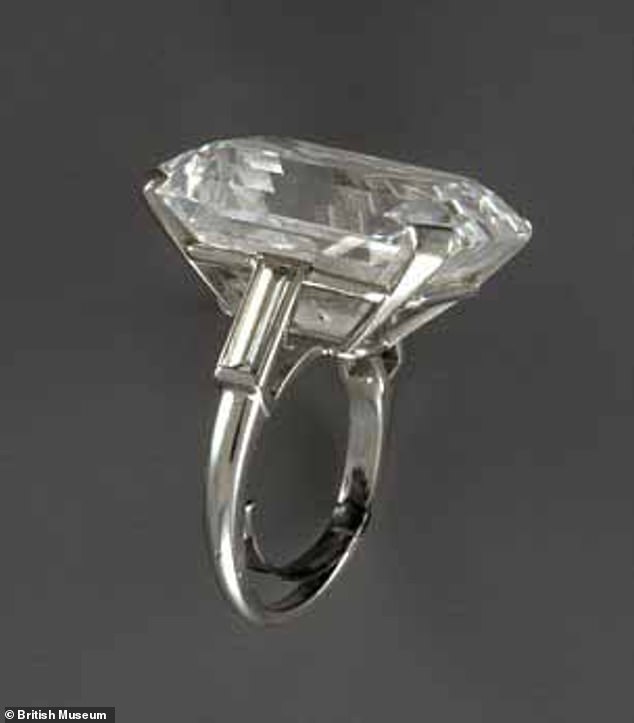
This Cartier diamond ring, pictured, went missing from the museum’s collection six years ago. It remains a mystery what happened to it
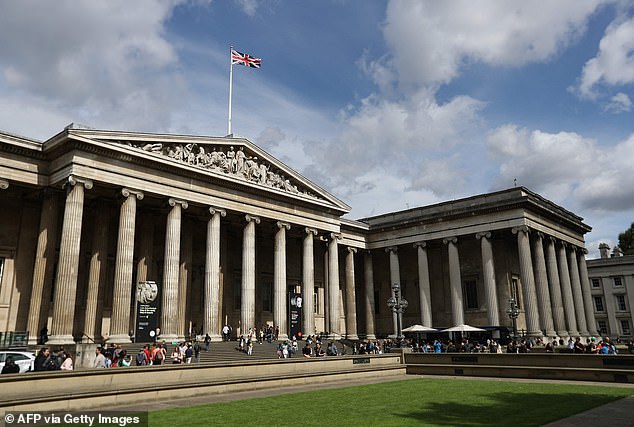
Mystery surrounds missing treasures from the British Museum, and there have been no arrests
Other lost pieces include wooden opium poppy scorers shaped like bugs and frogs, in addition to green and blue glazed leaf pendants and beads.
A Greek silver coin acquired by the museum in 1948 also vanished, along with other coins from ancient Rome and medieval Germany in the year leading up to April 2014.
An Edwardian ring acquired by the institution in 2001 had also disappeared by 2017.
Elsewhere, a chain of ’round sectioned silver wire’ believed to originate from an Iron Age hoard buried in 100 BC and worth thousands of pounds has also gone missing.
Other lost jewels include a fragment of shale crescent which the museum acquired in 1963, a glazed bead in its collection since 1832, a ceramic lamp and a glass coin-weight.
Some 540 pieces of pottery known as ‘sherds’, dug up on archaeological sites, are also absent.
The number of lost items is likely to be far higher as the museum only provided data from 2013
In a statement, the British Museum said: ‘We take the issue of any missing items incredibly seriously. Losses are recorded and reported to the trustees on an annual basis.’
Martin Henig, a professor in archaeology at Oxford University, said: ‘If even more is missing [than we know], it may point to a bigger problem. Things should not be disappearing from the museum. There should be a proper audit.’
The scale of the losses is said to have shocked staff at the museum after they were discovered following an internal probe into Peter Higgs, the curator of Mediterranean cultures who was sacked this summer. He denies any wrongdoing.
The suspected criminal, who is believed to have been plundering the museum for years, could have removed millions of pounds worth of items without being detected.
The world-famous institution has refused to say how many items have gone missing, but the Telegraph reports that sources inside the museum believe the true number to be over 1,000 and ‘closer to 2,000’.
It was further revealed that the British Museum hid the disappearance of the valuable items from the public for eight months after calling in the police in January this year.
Despite reporting to Scotland Yard in early January that jewellery, gemstones and precious metals spanning more than 3,000 years of history had mysteriously vanished from the museum’s vaults – it took until last week for the public to finally be told.
Treasures worth up to £50,000 were reportedly advertised for just £40, with some said to have been sold as long ago as 2016.
But the true extent of the vanished artefacts was not established until the start of this year when the Metropolitan Police’s economic crime command was called in to investigate.
Sources told The Sunday Times that the Met had previously advised the museum not to go public with information about the thefts.
But last week bosses at the British Museum were accused of showing a ‘lack of reaction’ when they were warned about stolen treasures being sold online.

